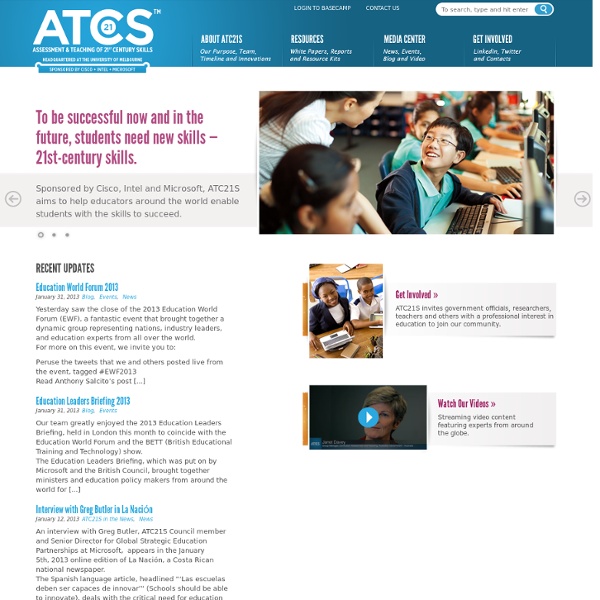



Onderzoek in Nederland en internationaal naar 21st century skills Wereldwijd wordt steeds meer onderzoek gedaan naar 21st century skills. De onderzoeken richten zich voornamelijk op definities, modellen, processen van implementatie en transformatie. Onderzoek in Nederland ‘Discussienota 21st Century Skills NL’ In opdracht van Kennisnet hebben Joke Voogt en Natalie Pareja Roblin een discussienota samengesteld. Rapportagedatum: mei 2010 Onderzoek verricht door: Universiteit Twente Auteur(s): Joke Voogt, Natalie Pareja Roblin Bron: Joke Voogt over 21st century skills Onderzoek internationaal ‘ITL Research’ ITL Research is een meerjarig wereldwijd researchprogramma ontworpen om te onderzoeken welke factoren van invloed zijn op de transformatie van het onderwijs en welke gevolgen die wijzigingen hebben op leerresultaten van leerlingen en studenten.
Writing Effective Lesson Plans Writing lesson plans can be a daunting task for even the most prepared teacher. Let’s face it, lesson plan writing for practicum experiences or teacher training programs is vastly different from writing lessons for the “real world.” Just as an architect wouldn’t begin a new building project without the blueprints, a teacher needs a solid lesson plan in order to be successful in the classroom. What makes a solid and effective lesson plan? There are certain elements that must be included in every lesson plan; however, these elements alone do not make a lesson plan effective. A quality lesson plan takes thought and preparation. Lesson Plan Writing: The Process In English Language Arts, a common term used to describe the process of writing a good story or essay is the “sandwich method.” A general lesson plan structure should be as follows: Introduction Learning objectives- Clearly defined- Measurable- Use tools like Bloom’s TaxonomyCurriculum objectivesStarter activity to assess prior knowledge
Strategies for Effective Lesson Planning Stiliana Milkova Center for Research on Learning and Teaching A lesson plan is the instructor’s road map of what students need to learn and how it will be done effectively during the class time. Before you plan your lesson, you will first need to identify the learning objectives for the class meeting. Objectives for student learningTeaching/learning activitiesStrategies to check student understanding Specifying concrete objectives for student learning will help you determine the kinds of teaching and learning activities you will use in class, while those activities will define how you will check whether the learning objectives have been accomplished (see Fig. 1). Steps for Preparing a Lesson Plan Below are six steps to guide you when you create your first lesson plans. (1) Outline learning objectives The first step is to determine what you want students to learn and be able to do at the end of class. What is the topic of the lesson? (2) Develop the introduction (6) Create a realistic timeline
Share "Feedforward," Not Feedback | Edutopia During my pre-service training, a favorite professor offered a simple creed: Teachers should put the car in drive, not reverse. At the time, he was referring to the forward thrust of educational progress, but his adage could just as easily capture the art of delivering effective feedback. Teachers spend much of their time circling a feedback loop, sharing and receiving information across multiple channels -- students, parents, supervisors, and central offices. There are report cards, progress notes, parent-teacher conferences and endless meetings. Teachers document goals, set performance standards, grade assessments, and correct misbehavior. The Power of Self-Evaluation Granted, there are mechanisms in place to evaluate teacher performance, but many of these value-added measures feel more like punch lists than professional reviews. Advocates of the feedforward approach -- including global software maker VMware Inc. -- point to its natural advantages. Instructional Coaching